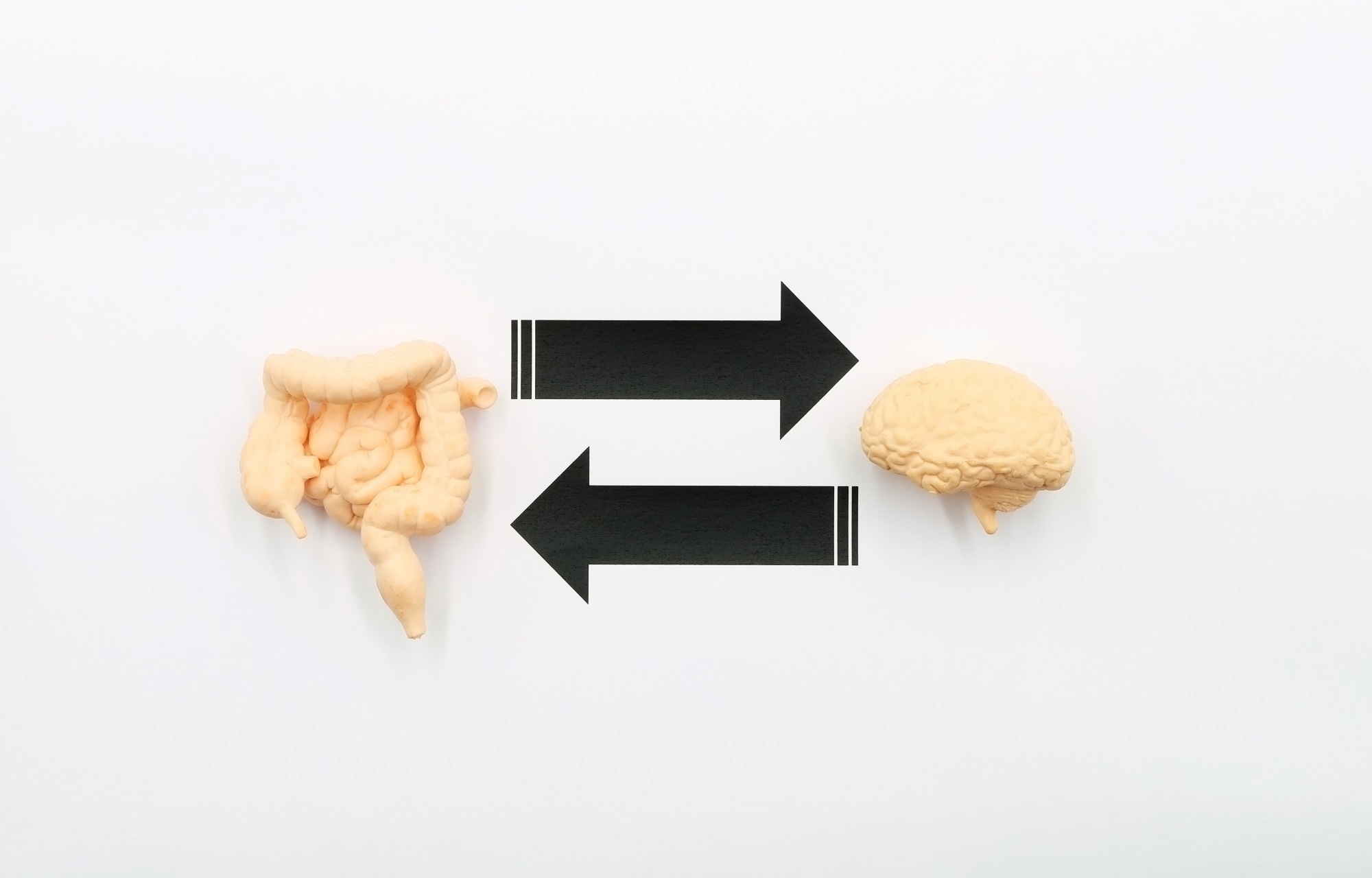In a recent study published in Nutrients, researchers reviewed the major disorders of gut-brain interactions (DGBIs).
 Study: Nutrition and Disorders of Gut–Brain Interaction. Image Credit: TopMicrobialStock/Shutterstock.com
Study: Nutrition and Disorders of Gut–Brain Interaction. Image Credit: TopMicrobialStock/Shutterstock.com
Background
DGBIs have complex pathophysiology, often characterized by the relationship between the ingestion of food and symptom occurrence and exacerbation.
As such, a diet low on fermentable oligo-, di-, monosaccharides, and polyols (FODMAPs) has been developed to regulate irritable bowel syndrome (IBS) symptoms.
In the upper gastrointestinal (GI) tract, the role of food in disorders such as functional dyspepsia (FD) and gastroesophageal reflux has lately attracted intense research attention.
The study and findings
In the present study, researchers reviewed the major DGBIs of the GI tract and their pathophysiological relationship with diet.
They searched Medline and PubMed for original articles, meta-analyses, reviews, and case series and included 36 literature reviews, eight meta-analyses, one congress abstract, and 51 original studies.
The pathophysiology of functional esophageal disorders (FEDs) is similar to IBS and FD. In randomized controlled trials, red chili was used to treat dyspeptic symptoms for five to six weeks. This resulted in a significant improvement in complaints.
Further, chronic exposure to capsaicin may desensitize the esophagus, modulate transient receptor potential vanilloid type 1 (TRPV1) receptors, and reduce mucosal hypersensitivity.
A large trial investigating the development of symptoms pre- and post-standardized meals found that 78% of FD patients experienced symptom exacerbation, with postprandial fullness being the dominant symptom.
Many patients with FD link their symptoms to specific foods and report avoiding them or experiencing postprandial symptom aggravation.
FD patients have a lower intake of calories and fat than healthy subjects. A systematic analysis of 16 studies identified high-fat and high-gluten foods as the most provocative for dyspepsia.
Further, a cross-sectional study reported an inverse correlation between daily fruit intake and the risk of postprandial fullness or early satiation.
A meta-analysis revealed that ultra-processed foods were associated with increased FD risk. IBS presents a heterogenous pathophysiology, and recent studies point to the role of food in symptom onset.
A survey involving over 1,000 Belgian individuals noted dietary factors as triggers for symptoms in 40%.
Furthermore, one study reported associations between late-night eating and bloating, nausea, gas, and abdominal pain in IBS patients.
Elimination of FODMAPs is an established dietary intervention to improve gastrointestinal symptoms in IBS patients. FODMAP intake leads to symptoms through increased gas and water presence in the intestine.
One study reported higher levels of methane and hydrogen produced by FODMAPs in IBS patients than in healthy subjects.
Besides, an increased prevalence of the sucrase-isomaltase gene variants has been reported in IBS, which could result in symptoms with the intake of starch or sucrose. Of note, one study reported symptom improvement in IBS patients following a restricted sucrose and starch diet.
Further, it is unclear whether the effect of a low FODMAP diet in IBS symptom improvement is due to a decline in carbohydrates or other factors.
Systemic food allergy is implicated in IBS, and food could induce a local immune response. However, immunoglobulin E (IgE) testing produces negative results in most patients.
Loose, frequent, watery stools characterize functional diarrhea (FDr). Altered intestinal motility plays a role in FDr progression.
Dietary factors can trigger diarrhea, including high-fat foods, alcohol, spicy foods, caffeine, and fermentable carbohydrates. Increasing soluble fiber intake can regulate bowel movements and decrease diarrhea episodes in FDr patients.
Soluble fiber in nuts, oats, root vegetables, bananas, and seeds is beneficial as it absorbs water and helps bulk up stool. Moreover, supplements like gum Arabic, methylcellulose, and psyllium can increase fiber intake.
In one study, psyllium markedly reduced episodes of fecal incontinence compared to a low FODMAP diet.
Constipation is defined as difficult, unsatisfactory defecation that typically presents as infrequent passing of hard stools and a feeling of incomplete emptying.
Some studies have noted lower water intake in constipated individuals than in non-constipated subjects. However, others did not observe this relationship or found an association only with water from foods, not fluids.
Similarly, some studies reveal an association between constipation and fiber intake, while others have not observed such associations.
The gut microbiota has a significant role in symptom development in DGBIs. Several therapeutic approaches modulate gut microbiota composition and modify the symptom profile.
Concluding remarks
Evidence in the literature suggests a significant association between food intake and symptom development in DGBIs. In FEDs, TRPV1 receptors are involved in hypersensitivity.
In postprandial distress syndrome, postprandial fullness and early satiation are common after intake of processed foods, while spicy foods can trigger FD symptoms.
Energy intake correlates with symptom severity, and fiber intake correlates with stool consistency. Eliminating FODMAPs can help improve symptoms, but the underlying mechanisms remain unclear.
While evidence highlights different associations between symptoms and foods and their components, special attention to cognitive factors related to food intake is also required.